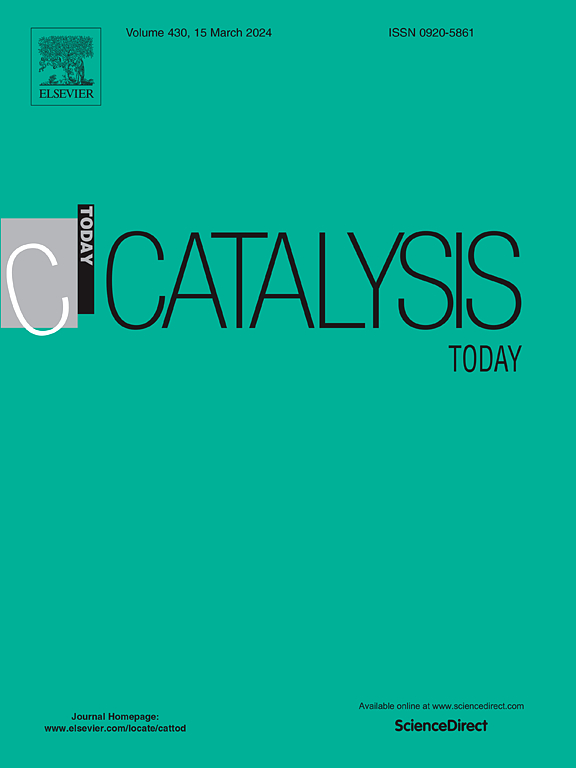碳量子点在三嗪基共价有机骨架上启动光催化整体过氧化氢生产
IF 5.2
2区 化学
Q1 CHEMISTRY, APPLIED
引用次数: 0
摘要
通过将太阳能转化为有价值的化学物质,光催化全面生产H2O2在绿色制造中具有重要意义。共价有机框架(COFs)在光催化方面前景光明,但在双电子氧还原(2e - ORR)和水氧化(2e - WOR)双途径的带隙调节方面仍面临挑战。在这里,我们报道了一种将碳量子点(CQDs)集成到三嗪-脲胺基TP-COF中的S-scheme异质结催化剂(CQDs@COF)。CQDs增强了可见光吸收,缩小了带隙,提高了亲水性/O2亲和力,协同促进H2O2的生成。DFT计算和对照实验阐明了通过s型异质结从CQDs到TP-COF的电子转移途径,从而实现了H2O2的成功生产。值得注意的是,[email protected]在没有任何牺牲剂的情况下,使用纯水在60 min内获得了1062 μmol g⁻¹ 的H2O2产率。本研究提供了一种新的策略来增强COFs中用于高效光催化的电荷分离/迁移,促进了高性能光催化系统的合理设计。本文章由计算机程序翻译,如有差异,请以英文原文为准。
Carbon quantum dot boots the photocatalytic overall hydrogen peroxide production on triazine-based covalent organic framework
Photocatalytic overall H2O2 production shows significances in green manufactory through converting solar energy into valuable chemicals under nature H2O and O2. Covalent organic frameworks (COFs) hold promises in photocatalysis but still face challenges in bandgap regulation for dual-pathway of simultaneous two-electron oxygen reduction (2e⁻ ORR) and water oxidation (2e⁻ WOR). Here, we report an S-scheme heterojunction catalyst (CQDs@COF) constructed by integrating carbon quantum dots (CQDs) into triazine-ureidoimine-based TP-COF. The CQDs enhance visible-light absorption, narrow the bandgap, and improve hydrophilicity/O2 affinity, synergistically boosting H2O2 generation. DFT calculations and controlled experiments elucidated the electron transfer pathway from CQDs to TP-COF via the S-scheme heterojunction, enabling a successful overall H2O2 production. Remarkably, [email protected] achieved an exceptional H2O2 yield of 1062 μmol g⁻¹ within 60 min under ambient conditions using pure water without any sacrificial agents. This work offers a novel strategy to enhance charge separation/migration in COFs for efficient photocatalysis, advancing the rational design of high-performance photocatalytic systems.
求助全文
通过发布文献求助,成功后即可免费获取论文全文。
去求助
来源期刊

Catalysis Today
化学-工程:化工
CiteScore
11.50
自引率
3.80%
发文量
573
审稿时长
2.9 months
期刊介绍:
Catalysis Today focuses on the rapid publication of original invited papers devoted to currently important topics in catalysis and related subjects. The journal only publishes special issues (Proposing a Catalysis Today Special Issue), each of which is supervised by Guest Editors who recruit individual papers and oversee the peer review process. Catalysis Today offers researchers in the field of catalysis in-depth overviews of topical issues.
Both fundamental and applied aspects of catalysis are covered. Subjects such as catalysis of immobilized organometallic and biocatalytic systems are welcome. Subjects related to catalysis such as experimental techniques, adsorption, process technology, synthesis, in situ characterization, computational, theoretical modeling, imaging and others are included if there is a clear relationship to catalysis.
 求助内容:
求助内容: 应助结果提醒方式:
应助结果提醒方式:


